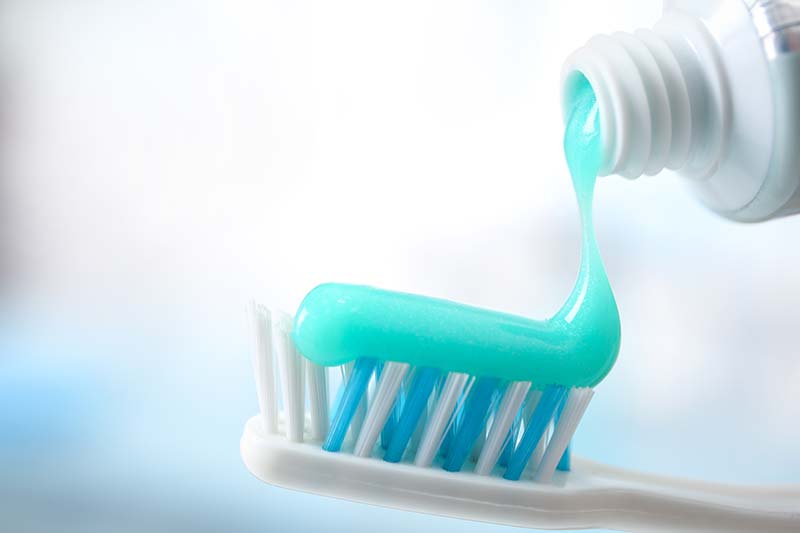
by Roseman Dental | Mar 6, 2022 | Dental Clinic Blog, Oral Health, Roseman Dental - NV, Roseman Dental - UT
Pregnancy is an exciting time full of preparations for a new little one. It’s also a time when the body goes through countless changes from top to bottom. Most mothers-to-be notice the most obvious changes, ranging from weight gain to thicker hair. What they may not realize is that hormone shifts caused by pregnancy can impact their dental health. In fact, many women are shocked when their dentist finds multiple cavities following the birth of their child. Good periodontal health is essential while pregnant for the health of both moms and babies.
Greater Risk for Pre-Term Birth
Periodontal disease can cause infections, which can increase the levels of biological fluids that induce labor. Neglecting to adequately care for your teeth and gums during pregnancy can raise the risk of delivering before the 37-week mark. Preterm delivery can be dangerous for babies, as they may not yet be fully developed. These low-birth-weight babies are at risk for developmental delays and may even spend significant time in a neonatal intensive care unit following their entry into the world.
The Impact of Periodontal Disease
Nearly every pregnant woman deals with sore, swollen and bleeding gums, commonly known as “pregnancy gingivitis.” Proper oral hygiene is necessary to stop the issue from getting worse. Once gingivitis progresses into periodontal disease, it’s possible to become susceptible to other health concerns, including:
- Tooth loss
- Cardiovascular disease
- Diabetes
When brushing your teeth, make sure to focus the efforts around the gum line to get rid of plaque and bacterial build up. Flossing is an important part of a daily dental care routine too.
Women’s bodies sacrifice many nutrients as they work to grow tiny humans, which can leave the mouth without protection against bacteria. Regular dental check-ups and cleanings can keep moms on the right healthy path as they get ready to welcome new life.

by Roseman Dental | Nov 9, 2021 | Dental Clinic Blog, Oral Health, Roseman Dental - NV, Roseman Dental - UT
If you are the parent of a baby or toddler and your family has successfully made it through the dreaded teething stage, you may be wondering what the next step is in terms of your child’s oral hygiene and care. Dental professionals agree that the sooner a child can see a dentist, the better. This is particularly true when it comes to preventing dental health issues. Periodontal disease and many other dental problems that commonly affect children are more likely to occur in children who do not receive regular dental care and evaluations.
If you’re thinking it’s not that big of a deal because your child will lose those baby teeth anyway, keep in mind that these issues can lead to a broad range of more significant problems down the line, including nutritional problems from trouble eating and drinking, and problems with speech development and self-esteem.
When to Schedule Your Child’s First Dental Visit
According to the American Academy of Pediatric Dentistry (AAPD), infants and toddlers should have an oral evaluation performed within six months of the appearance of his or her first tooth. Because there’s so much variability among children as to when that first tooth erupts, AAPD recommends visiting a dentist for an evaluation before the child’s first birthday even if that first tooth has yet to appear.
Oral Health at Home
While seeing a dentist early on improves your child’s chances of optimal oral health, there are several other things you can do in the comfort of your own home. AAPD recommends avoiding putting children to sleep with a bottle of milk or juice, and not allowing them to sip on a bottle with those things in it throughout the day either. Both actions increase your child’s chance of tooth decay. If your child has trouble falling asleep without a bottle, make sure it contains only water, and try to take it away entirely before your child hits the one-year mark.
Another tip is to gently wipe their gums and teeth with a soft washcloth to remove bacteria, and to start doing this early on so they get used to it. There are also infant “brushes” that go on the finger.
When it comes to your child’s oral health, prevention is paramount. Taking the aforementioned tips and seeing a dentist early on are the best ways to set your child up for healthy teeth and gums. Roseman Dental offers care for even the youngest members of your family.
.

by Roseman Dental | Oct 12, 2021 | Dental Clinic Blog, Oral Health, Roseman Dental - NV, Roseman Dental - UT
For many people, a trip to the dentist is not at the top of their list of favorite things to do. However, most can get through a checkup with relatively low levels of fear or anxiety. For those who have a dental phobia, even thinking about going to the dentist is enough to cause panic. If you are someone who avoids dental offices due to your inability to deal with the sounds, feelings and overall experiences you associate with an oral cleaning or other dental care, then you could be exposing yourself to negative health consequences caused by inadequate oral health.
Pinpoint your fear, and use these tips to manage it:
Fear of the Unknown
If showing up at the dentist and not having a clue what you are about to undergo sends you into a tailspin, then you may benefit from having a full explanation of all procedures prior to your visit. Make sure that your doctor understands your concerns and is willing to discuss your appointment in advance, whether in person, over the phone, or via video call.
Fear of the Dentist
For some people, the dentist himself is an ominous presence that causes fear. A dentist who only comes into the room for a few moments to inflict pain, all while wearing a mask, can be worrisome. If possible, find a professional who can help you break down the doctor-patient barrier by speaking with you, sitting at eye level, and taking other steps to lessen the tension in the room.
Fear of the Equipment
The tray of equipment next to your chair can look like a line-up of torture devices. The equipment can be loud, sharp and terrifying, but if you take the time to hold and inspect each item, you may find that they are not that scary after all. Talk to your dentist about doing this if it’s the instruments that frighten you.
Fear of Feeling Out of Control
Lying back in the examination chair and letting other people look into the mouth can make some patients feel out of control of their situation. If this is the case for you, ask your doctor if you can be leaned back partially or even assist with the process by holding a tool.
The dentist does not have to be a stress-inducing experience if you are willing to work towards feeling more comfortable in the chair.
Providers at Roseman Dental are committed to providing compassionate care to all patients. They’ll talk through your questions and concerns with patience, understanding, and expertise. Make an appointment today and send your fears down the drain (right along with your plaque, and any other mouth germs).

by Roseman Dental | Oct 12, 2021 | Dental Clinic Blog, Oral Health, Roseman Dental - NV, Roseman Dental - UT
Although your toothbrush might look clean when it sits on the ledge of the sink, the bristles could actually be contaminated with microbial organisms that came from your mouth. Those can live on the bristles for weeks. Fortunately, there are some things you can do to keep your toothbrush clean and effective so you can get good use out of it.
Wash Your Toothbrush
Before and after use, rinse the brush with water to remove debris. You may also want to think about investing in a special device, such as a toothbrush sanitizer, that cleans it much more thoroughly and has built-in technology to kill the aforementioned germs.
Store Your Toothbrush Correctly
Keep your toothbrush stored upright in a position that allows it to dry out. Think about using a bristle cover that promotes airflow through small holes. Some people think that keeping the bristles completely covered is ideal, but that trapped moisture can actually foster bacterial growth on the brush.
Know When to Throw the Brush Out
Your toothbrush isn’t designed to last forever. Replace it every three to four months, or whenever the bristles start to show signs of wear. Take a look today! If the bristles are fraying, or bending downwards or sideways instead of standing up straight, it’s time to pick up a new brush.
Don’t Share Your Toothbrush
You should be the only one who uses your toothbrush. Our mouths can be homes for hundreds of different bacteria and viruses. Sharing is a surefire way to spread disease, from a cold to gingivitis, and even HIV or hepatitis B. Although it’s tempting sometimes, don’t share the brush with a significant other or another person in your household.
Replace Brushes After Illnesses
You’ve already learned how germs can live on toothbrushes for a long time. It should make sense then that you need to throw away any toothbrushes a person has used while he or she was sick.
Use these tips to make sure you have a clean toothbrush that will be able to keep your mouth and teeth just as clean.
Toothbrush hygiene is just part of keeping up with your dental health! Regular cleanings and exams are important ways to make sure your teeth stay looking and feeling good. If you don’t have an upcoming appointment somewhere on your calendar, schedule an appointment at Roseman Dental.

by Roseman Dental | Jul 20, 2016 | Dental Clinic Blog, Oral Health, Roseman Dental - NV, Roseman Dental - UT
To keep your pearly whites as brilliant as possible, you can use the usual whitening methods: expensive professional treatments, gum, toothpaste, and mouthwash. There are also simple, everyday habits that can help brighten your smile. Your teeth not only help you speak and eat, but they contribute to your overall appearance. Here are the top three tips to help you keep your teeth sparkling white.
- Replace your toothbrush. Make sure to replace your electric toothbrush head or manual toothbrush every two to three months, or more often if you’ve had a cold. The bristles of the brush transfer germs to your mouth. Also, brush your teeth properly by placing the toothbrush against your gums at a 45-degree angle and lightly move it in a circular motion, not back-and-forth. Hold your toothbrush as you do a pencil so you don’t scrub too vigorously.
- Gargle before brushing with apple cider vinegar. Rinsing with apple cider vinegar in the morning before brushing helps remove stains and whiten your teeth. It will also kill germs lurking on your gums and in your mouth.
- Avoid teeth-staining food. Smoking cigarettes and drinking black tea, cola, and red wine will stain your teeth. Any food or drink that is dark will probably result in stains. Brushing immediately after drinking or eating dark-colored food or drinks can help. You can also use an effective teeth-whitening product from your dentist or over-the-counter.
Eat an apple, also known as nature’s toothbrush, for convenient teeth cleaning action. Crisp, firm foods help clean your teeth while you are eating them, such as popcorn, celery, and raw carrots. For best results, choose these options as the final food in your meal if you won’t be able to brush your teeth right after eating. You’ve worked hard to get your teeth white, so make sure to take the steps necessary to keep them that way.







